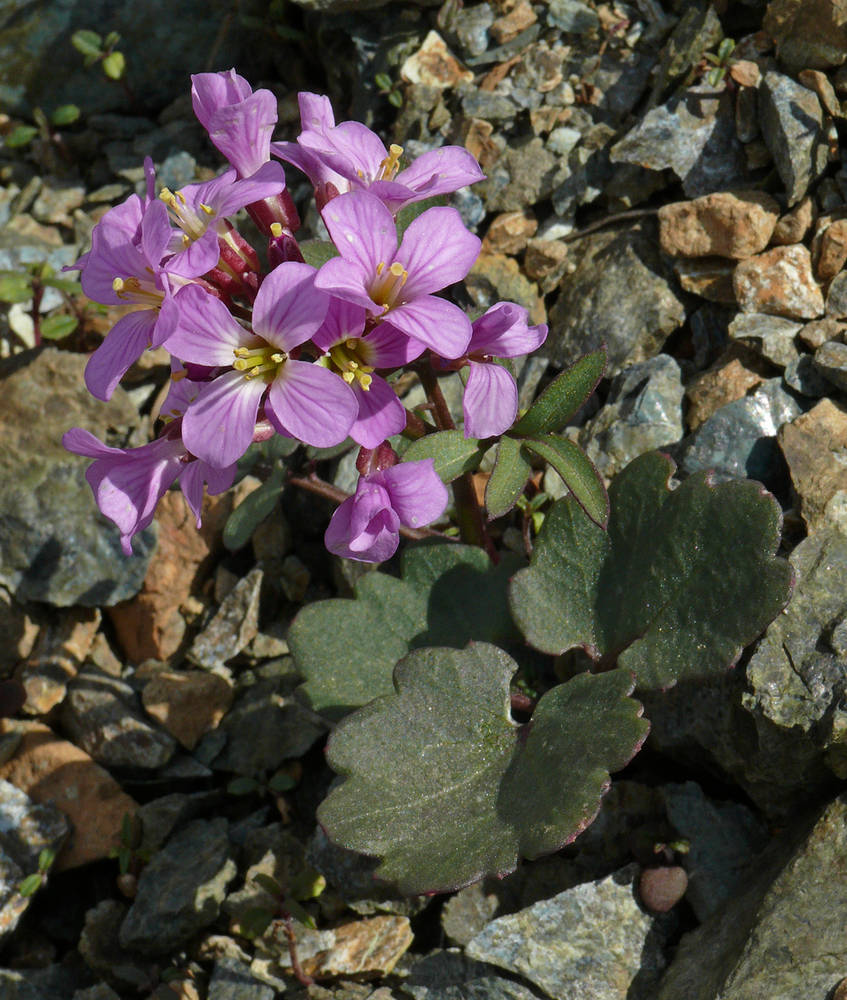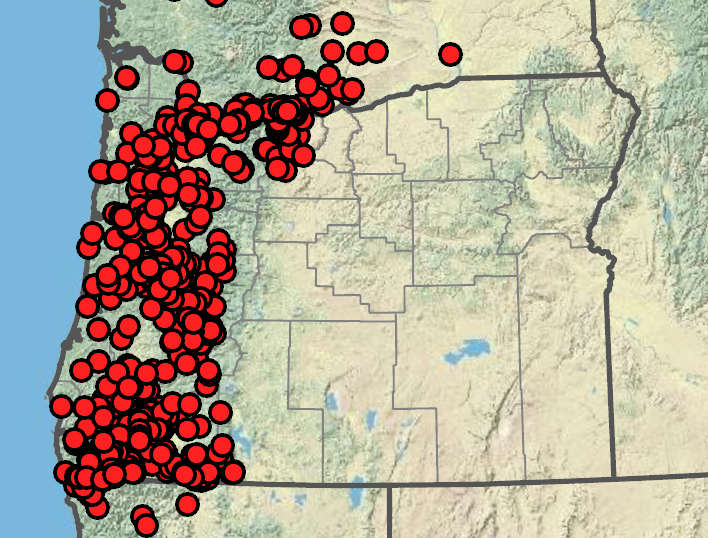Cardamine nuttallii
Cardamine parviflora
Nuttall's toothwort, slender toothwort
narrow-leaved bittercress, sand bittercress, small-flowered bittercress
erect, 0.5–2(3) dm; simple, bases above ground much wider than attachment to rhizome.
somewhat flexuous; (5)10–30(40) cm.
often withered by anthesis, not rosulate, pinnately (5)7–13(17)-foliolate; (2)4–10 cm;
terminal leaflets linear, oblong, oblanceolate, obovate, or suborbicular; (1)3–10 × 1–7 mm;
margins entire, or 3(5)-toothed or -lobed;
lateral leaflets similar to terminal.
simple or 3(5)-foliolate; (3)4–20(25) cm;
blades or terminal leaflets reniform, suborbicular; ovate, or oblong; (0.9)1.3–4(5.2) × (0.8)1.2–5(7) cm, often with purple spots, bases cordate to obtuse;
margins apiculate-dentate or 5–7-lobed.
1–3, pinnately or palmately compound, 3(5)-foliolate, bases not auriculate;
terminal leaflets ovate, oblong, or linear; (0.5)1–3.5(6) cm;
lateral leaflets smaller; entire, dentate, or lobed.
pinnately or palmately compound; (5)9–15(17)-foliolate, bases not auriculate;
lateral leaflets narrowly oblong, linear, or filiform, 1–3 mm wide;
terminal leaflets filiform, linear, or narrowly oblong, 3–10(16) × 0.3–3 mm;
margins entire or rarely 1–3-toothed.
bracts 0, fruiting pedicels ascending to divaricate, 1–3.5 cm.
bracts 0, fruiting pedicels divaricate or ascending, 4–10 mm.
sepals erect, oblong, 3.5–5 mm;
lateral pair saccate;
petals obovate, 10–15 × 4–7.5 mm, purple to pale pink, rarely white, not clawed;
tips rounded;
ovules 8–16 per ovary;
styles 4–8 mm.
sepals oblong, 1–1.5(2) mm;
petals oblanceolate; (1.5)1.8–2.5(3) × 0.4–0.8(1) mm, white;
stamens 6;
anthers ovate, 0.2–0.4 mm;
ovules 20–50 per ovary;
styles 0.3–0.7(1) mm.
25–56 × 2–2.3 mm, glabrous.
(5)10–20(25) × 0.6–0.9 mm, glabrous.
oblong, 2–2.5 × 1.4–1.6 mm.
oblong-ovate, 0.6–0.9 × 0.4–0.6 mm, margined or not.
=16.
Cardamine nuttallii
Cardamine parviflora
Damp woods, shaded bottomlands and hillsides, mossy slopes, streamsides. Flowering Mar–Jul. 0–2000 m. Casc, Col, CR, ECas, Est, Sisk, WV. CA, WA; north to British Columbia. Native.
Roadsides, riverbanks, rocky crests and outcrops, dry woods, fallow fields, marsh and swamp margins, floodplains, waste grounds, ledges and cliffs. Flowering Apr–Jun. 0–1300 m. BW, WV. WA; throughout southern Canada, central and eastern US. Native.
Ihsan Al-Shehbaz
Ihsan Al-Shehbaz
- Local floras:
BC,
CA,
OR,
WA
- Local Web sites:
CalFlora,
CalPhotos,
Flora NW,
PNW Herbaria
WildflowerSearch
iNaturalist (observations)
USDA Plants Database
- LBJ Wildflower Center
- SEINet
- Plants of the World Online
- Encyclopedia of Life
- Wikipedia
- Google Image Search




